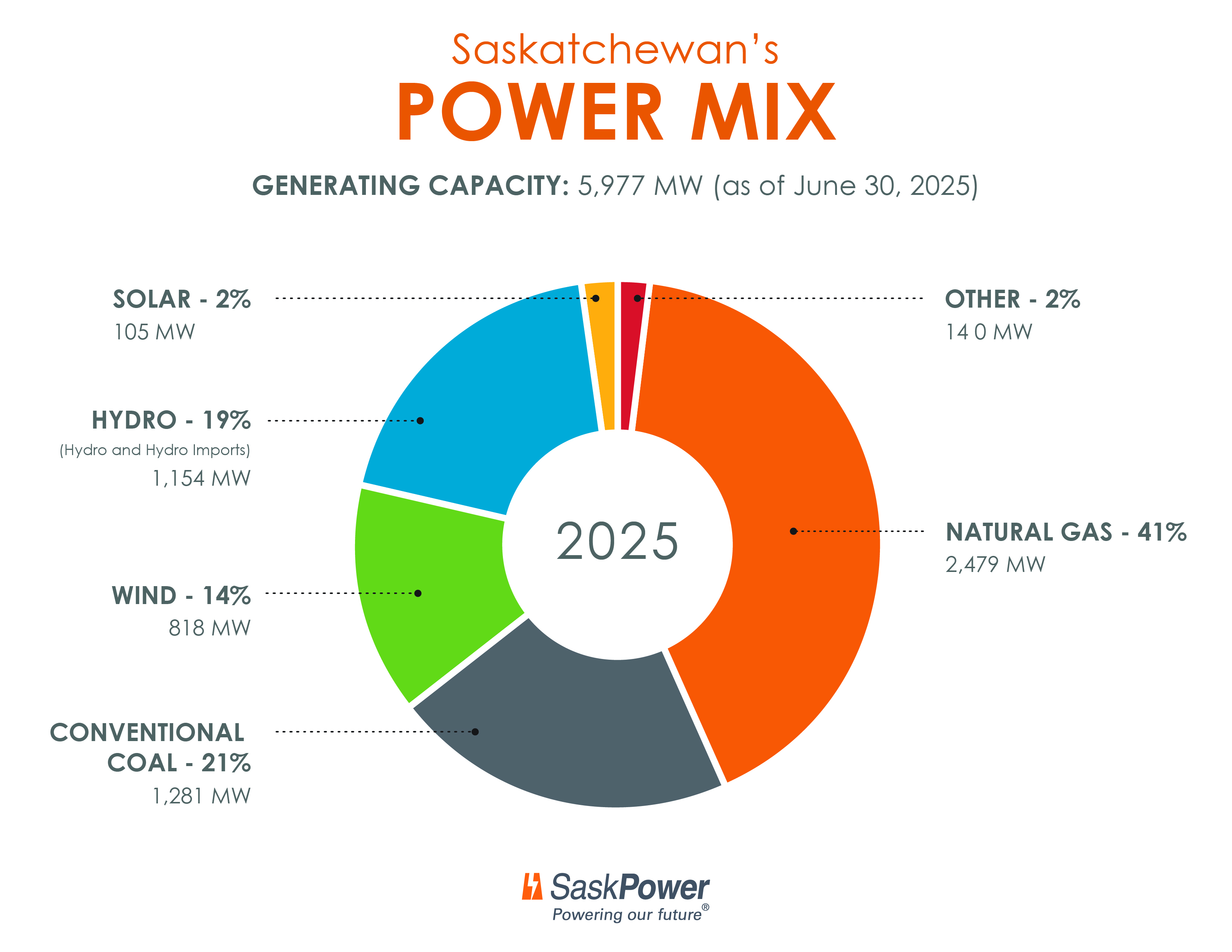How power is supplied depends on what resources are locally available. Take a few minutes to explore the ways we can produce electricity for our province. We’ve listed the pros and cons of each based on availability, cost, dependability and emissions.
There’s no one source that can meet all our province’s needs. It will take a combination of sources to provide reliable, sustainable, cost-effective power into the future.
It's All About Balance
All supply options have different traits or characteristics. One of those traits is their availability. This is known as dispatchability. The most balanced system would include a mix of these types of power generation.
Dispatchable
Dispatchable power refers to supply options that are always available. They can be called upon to provide power at any time. Examples of dispatchable power are natural gas, coal or imported energy.
Non-dispatchable
Non-dispatchable power refers to supply options that aren’t always available. They can only be called upon to provide power under certain conditions. Examples of non-dispatchable power are wind and solar.
We run our power facilities differently based on if they offer dispatchable or non-dispatchable power. We run our facilities in 3 ways:
- Baseload
Baseload power stations are used for reliable power day in and day out. They may come offline for routine maintenance but generally they’re always running. They offer dispatchable power and are used to meet Saskatchewan’s minimum power needs. An example of baseload power station is the Chinook Natural Gas Power Station in Swift Current. - Peaking
Peaking power stations are used only in certain cases. They offer dispatchable power so we turn them on or increase their power production when we need to. That could be when we see an increase in demand for power. Or when we can’t get power from other sources – like when it’s not windy or sunny. An example of a peaking power station will be the Aspen Natural Gas Power Station near Lanigan. - Intermittent
Intermittent power facilities can only be used when the conditions are right – like when it’s windy or sunny. They offer non-dispatchable power. We can’t turn intermittent power on when we need it like we can with peaking power facilities. An example of an intermittent power facility Golden South Wind Facility near Assiniboia.
Some supply options are ideal for our day-to-day requirements, while others might be used only when we need more power. The right mix will be a blend of a few sources of energy, along with new technologies, and reminders for us all to use only the power we need and to unplug electronics when they’re not being used.



